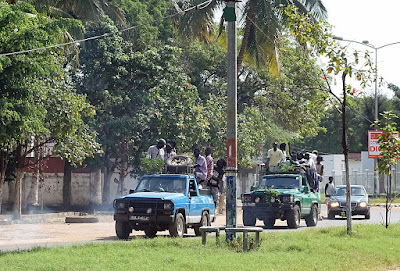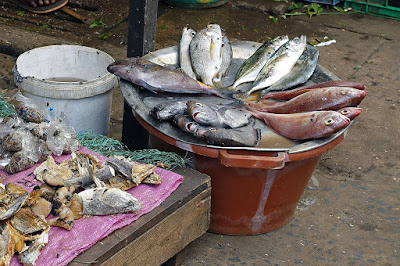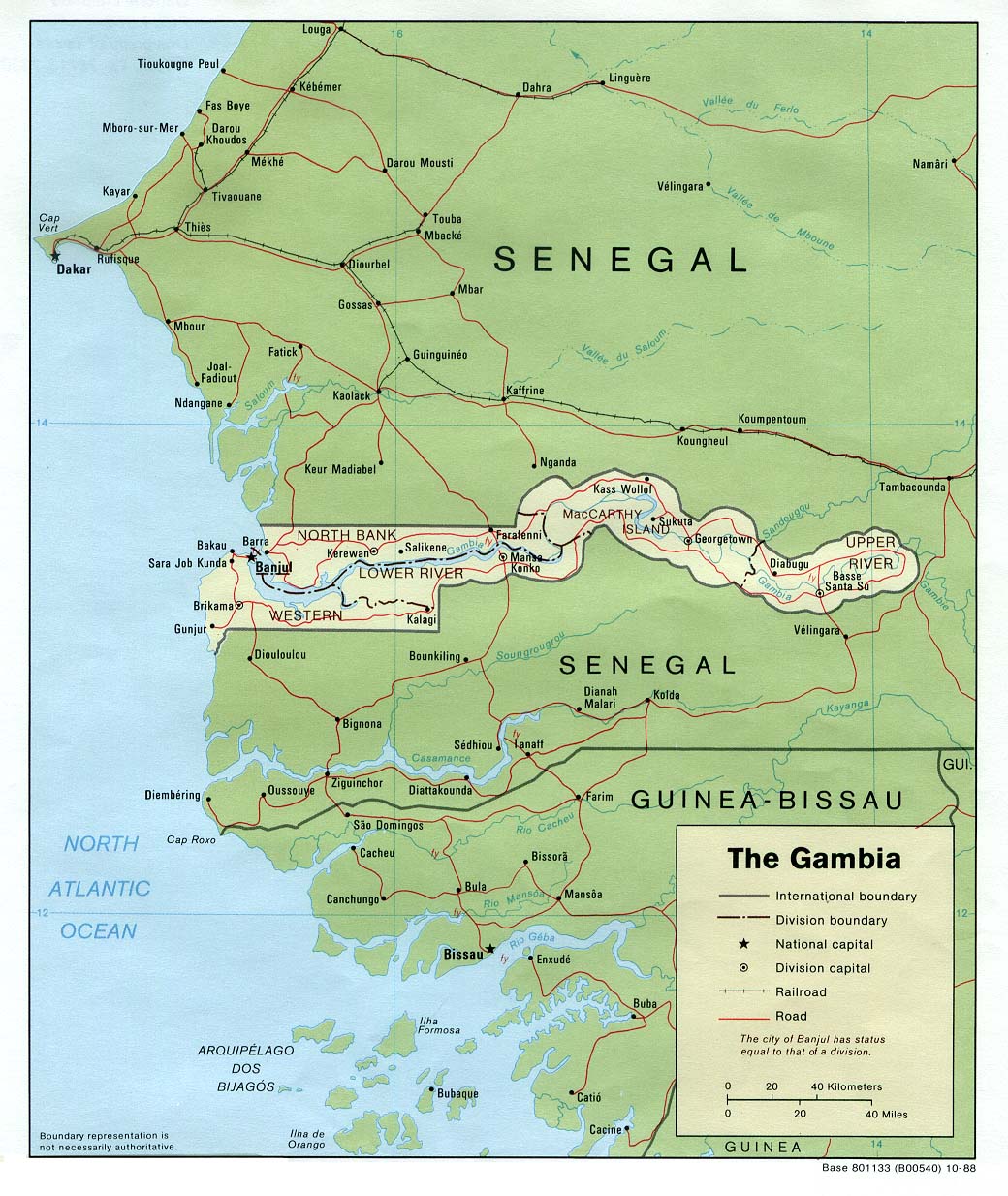On several of our sea days, we had lectures from a historian who specialized in West Africa. He said that Senegal was one of the more successful African democracies, and that Dakar had a good physical infrastructure because it was the capital of an important French colony and the French had invested a lot in it.
At the other end of the scale was
The Gambia (they add "The" to the name to distinguish it from the Gambia River, I am told). Although they had (allegedly) democratic elections for the first 25 years of independence, In 1994, there was a coup, and the current leader,
Yahyah Jaammeh, took power. By all accounts he is not a nice man. In addition, (according to our lecturer, and confirmed by my visit), The Gambia is a dump. The reason for this is that The Gambia is a narrow strip of land along the Gambia river (sort of like a suppository stuck up the butt of Senegal, according to someone on the ship). It was a British colony, but the British assumed it would eventually be taken over by Senegal, so they never invested in any infrastructure. It shows.
We arrived in the (not) thriving capital of
Banjul this morning. There were a few tours availbable, including one up the Gambia river, but we opted for a tour of Banjul and a visit to a Crocodile pond.
 |
| Our reception committee at the docl |
 |
| View of the shoreline near downtown Banjul |
 |
| Central Banjul |
The tour of Banjul literally took about 10 minutes (the city has only about 35,000 people), although we would stop back there later in the day. For this part of the tour, we didn't even get out of the bus.
 |
| Housing in Banjul |
 |
| A warm welcome to The Gambia |
 |
| More of Banjul |
There were very few buildings that looked like they had been built in the last 40 years, and what there were consisted of religious and government buildings. By the way, after our trip, the President declared The Gambia to be an Islamic Republic. Not sure if our visit had anything to do with that.
 |
| A mosque, one of the more modern buildings |
 |
| A government building |
 |
| That's debatable... |
 |
| A restaurant outside Banjul |
 |
| Along the coast outside Banjul |
After our short survey of Banjul, we headed to Serrekunda, a town about 10 miles away.
 |
| The highway between Banjul and Serrekunda |
 |
| Embassy Row |
 |
| A shop in Serrekunda |
We got off the bus in Serrekunda and walked down a dusty residential street to the
Kachikally Crocodile Pool. We got (I think) a good feel for residential life in The Gambia. Most of the houses were compounds behind walls, where several generations of a family lived. Note, however, the presence of satellite dishes in one of the pictures below.
 |
| View inside of a compound |
 |
| Yes, this is a street. But they do get satellite. |
Eventually we arrived at the crocodile pool, which, as advertised, had lots of crocodiles. I don't know whether they were drugged or well-trained, but you could actually pet them.
 |
| Feels like chicken |
 |
| Been there, did that |
 |
| Yes, they were alive |
On the way out we stopped by a craft area in the village, where for some reason, we were not accosted by salespeople.
We then returned to the bus through the village. People in the area seemed more than happy to have their pictures taken.
Once on the bus, we headed back to Banjul. Here are a few shots from along the way.
 |
| A typical house compound |
Outside Banjul, we made the obligatory craft market stop. Here we encountered some of the most aggressive sellers that we have encountered anywhere.
 |
| The Banjul Arch, celebrating the 20th anniversary of the coup |
 |
| Some celebrants |
Back in Banjul, we stopped at the National Museum, which is located in an old house. The Smithsonian, it wasn't, but it was fairly interesting.
 |
| National Museum of The Gambia |
From the museum we went to the Albert Market, the main street market in Banjul. I don't think I've ever felt as far away (culturally) from home as I did here. It was absolutely mobbed, and was. to be generous, not exactly up to Western hygienic standards.
 |
| Bananas for sale |
 |
| The things that look like flies? They're flies |
 |
| This was about the emptiest place in the market |
Apparently a lot of Gambians can't afford ready-made clothes, so they buy fabric and take them to tailors in the market to have them sewn.
From the market, we headed back to the bus. The photo below is of the only modern store that I saw in Banjul.
 |
| They never stop selling |
 |
| A street in central Banjul |
Next:
Day 18: Abidjan, Ivory Coast
(Days 16-17 were at sea and nothing happened)




